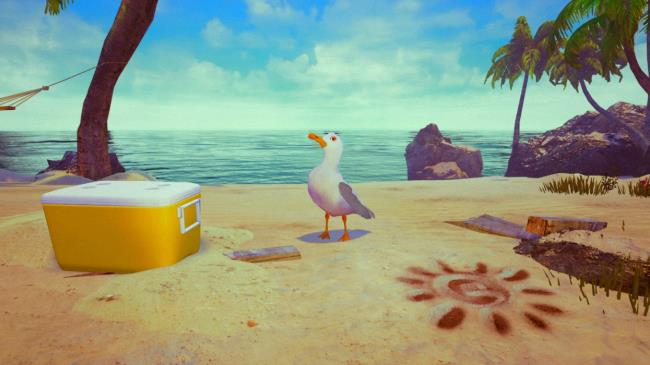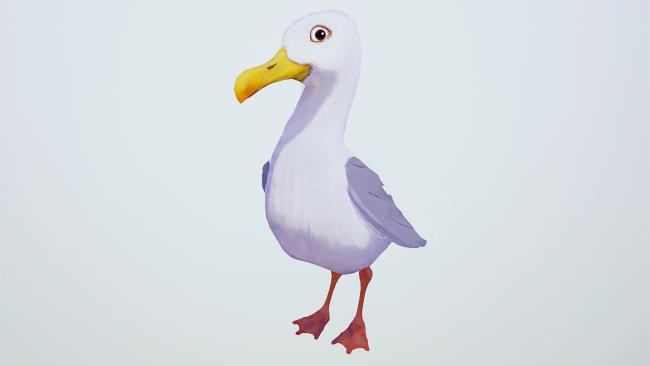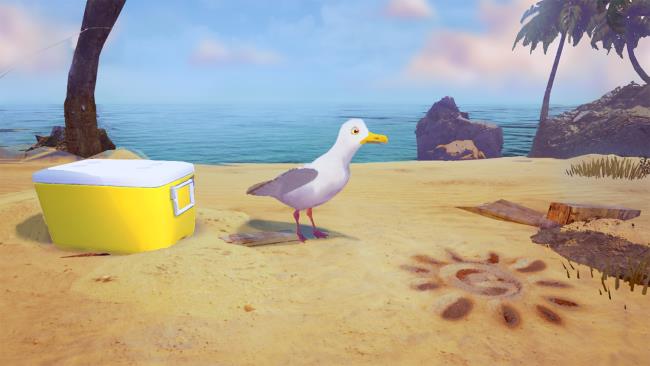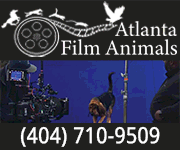
- LOCATION CONNECTION has the best RANCHES FOR FILMING!
- Hollywood Studio Gallery has Moved
- Cranium Camera Cranes Introduces the all new Tankno Crane!
- AirDD's inflatable "Kraken" designs transformed Masked Singers
- GBH maintenance Provided a Hollywood Shine for Herzog Wine Cellars
- Production News & Events
Spring Newsletter - Immersive Venue/ Black Box/ Stage
2024 DTLA Arts District - Exclusive Malibu Listing from Toni Maier - On Location, Inc.
- Empowered Collaborates with Harlequin Floors
- Movie Premiere, TCL Chinese Theater
- Studio Tech provides services for the Grammy House
- Sora AI Text To Video
- New Apex Photo Studios
Website: Rent Smarter, Create More & earn rewards! - How Ideal Sets Founder Harry Hou Cracked the Code on Affordable Standing Sets
- New Storage & Co-Working Spaces In Boyle Heights near Studios
For Short or long term rental - Auroris X Lands at A Very Good Space
- The 96th Academy Awards
March 10, 2024 at 7:00 p.m. EST / 4:00 p.m. PST. - GBH Maintenance Completes Work on 33000ft Production Space
- MUSICIAN ZIGGY MARLEY IS ANOTHER HAPPY.CUSTOMER OF MAILBOX TOLUCA LAKE'S 'DR. VOICE'
- Custom Digitally Printed Commencement Banners & Backdrops
- Rose Brand, SGM, Bill Sapsis, Sapsis Rigging, and Harlequin Floors Sponsor NATEAC Events
- Kitty Halftime Show air for Animal Planet's Puppy Bowl
- Georgia Animal Actors Persents Merlin
- ESTA Launches Revamped NATEAC Website
- Mollie's Locations
- ZEISS Cinema News for February
- Seamless Fabric Backdrops up to 140ft x 16ft, Printed Floors...
- Check out all the Pioneer Gear at Astro!
- Production News & Events
- All of Your Production Supplies Gathered in Just One Place
- Meet the RED V-Raptor [X]
- Sit Back and Enjoy Some Laughs
- Mr. Location Scout Scouted and Managed Locations
- Introducing...
Landmark Restaurant in Encino - The White Owl Studio is celebrating all that is new!
- Last Call for NATEAC 2024 Proposals
- NOMINATIONS ANNOUNCED FOR THE
2024 MUAHS - Voted Best New Stage Rigging Products at LDI 2023
- NEED MORE SPARKLE IN THE FLOOR?
- David Panfili to Appoint Michael Paul as President of Location Sound Corp.
industry news
The Latest Industry News for the Exciting World of Production.
Creative Handbook puts together a bi-monthly newsletter featuring up-to-date information on events, news and industry changes.
Add My Email
How A Former Pixar Executive Is Building A VR Company Based On Pixar Principles
By: NICOLE LAPORTE, fastcocreate.com | April 20, 2016

As Limitless Entertainment prepares to release its first VR film, Gary the Gull, founder Tom Sanocki talks about Pixar's influence.
Before Tom Sanocki formed the Seattle-based virtual reality company Limitless Entertainment, he spent 11 years at Pixar, where he designed characters for films such as Cars, Ratatouille, Brave, Monsters University, and The Good Dinosaur. His first job was creating the jellyfish in Finding Nemo. When he first arrived at Pixar, the company had just 250 employees and felt very much like a startup. Sanocki thus got a front-row seat as Pixar transformed, as he says, "from an animation company into an animation powerhouse."
 Sanocki's experience at Pixar, which is famous for its highly creative work culture and rigorous dedication to problem solving, greatly influenced Sanocki, who is taking many of the principles he learned in Emeryville and applying them to Limitless. Sanocki also spent four years at the video game company Bungie, which he says has also influenced his new company (video games and VR content have much in common given that both are designed to respond to players or viewers). But the Pixar ethos is what most infuses Limitless, both in terms of corporate culture-Sanocki implemented a "feedback loop" whereby employees are constantly sharing ideas and opinions with each other-and what it's creating. The company's first VR short film, Gary the Gull, has a distinctly Pixar-ian feel. The animation is superb, and the humor is smart and knowing. Much thought has clearly been put into the main character, a fast-talking gull who Sanocki describes as "a conman, a scheister." Gary has one goal: to steal the lunch from the cooler that you have just unpacked from your car and placed down in front of you on a beach. His methods are mostly verbal.
Sanocki's experience at Pixar, which is famous for its highly creative work culture and rigorous dedication to problem solving, greatly influenced Sanocki, who is taking many of the principles he learned in Emeryville and applying them to Limitless. Sanocki also spent four years at the video game company Bungie, which he says has also influenced his new company (video games and VR content have much in common given that both are designed to respond to players or viewers). But the Pixar ethos is what most infuses Limitless, both in terms of corporate culture-Sanocki implemented a "feedback loop" whereby employees are constantly sharing ideas and opinions with each other-and what it's creating. The company's first VR short film, Gary the Gull, has a distinctly Pixar-ian feel. The animation is superb, and the humor is smart and knowing. Much thought has clearly been put into the main character, a fast-talking gull who Sanocki describes as "a conman, a scheister." Gary has one goal: to steal the lunch from the cooler that you have just unpacked from your car and placed down in front of you on a beach. His methods are mostly verbal.As Sanocki says, "Gary is fundamentally a used car salesman. And just like a used car salesman will do, he'll ask you questions, he'll engage you, but he doesn't need you to answer a certain way to accomplish his goal. If you say that you like convertibles, well, he has a great convertible for you. If you say that you don't like convertibles, there's a great sedan over here, that's perfect for you."
Unlike most VR characters, Gary truly does interact-and not just to your voice. If you nod your head, he knows what you mean and will respond accordingly. If you move in too close to him, he'll fly away briefly. "His personal space is very important," Sanocki says. The film's story line ultimately depends on how you react to him.
This interactivity, and the technology that allows it, lies at the heart of Limitless, and is how Sanocki thinks he can push VR forward. "People are actively avoiding characters" in VR, he says. "I've been told by other executives that characters are 'just too hard.' The ones people do are robots, which are easy to do. Its true-characters are really hard to do. But I don't think they're as hard as people think they are. So the right response isn't 'let's be afraid, let's avoid it.' It's 'let's find a way to make it easier.'"
In the case of Gary the Gull-which will be available on the Sony PlayStation VR this October; release dates for other platforms are still being worked out-the San Francisco-based company Motional Entertainment handled the creative aspects of the film and came up with the character. Motional's founder, Mark Walsh, is another Pixar alumnus-he was a writer and director at the company for 18 years- who is used to collaborating with Sanocki. "When we were working on the jellyfish character on Nemo, we went to Tom. He'd use all his creative skill in technology to build a character like that. I was on the design team, he was on the construction team. So he could invent technology for creatives like myself."
 For Gary the Gull, Sanocki and his team built technology that takes into account subtle human interactions, such as head movement. "Right now, on your phone, you say, 'Siri, tell me what time it is. What's the capital of Brazil.' It will tell you," says Walsh. "It's hearing your voice and spitting information back. The limits in technology right now are the inputs. Your voice. Limitless uses your voice, but also where your head is pointing."
For Gary the Gull, Sanocki and his team built technology that takes into account subtle human interactions, such as head movement. "Right now, on your phone, you say, 'Siri, tell me what time it is. What's the capital of Brazil.' It will tell you," says Walsh. "It's hearing your voice and spitting information back. The limits in technology right now are the inputs. Your voice. Limitless uses your voice, but also where your head is pointing."This boundary-pushing approach to both technology and art is something both men say they learned at Pixar and are applying to their new companies. As are their management and team-building styles. Sanocki elaborated for Co.Create how that plays out on a day to day level.

FOSTERING COMMUNITY
Sanocki says that creating a sense of community between employees is crucial for a rich work environment. Regardless of what title or position someone holds, they should feel comfortable directly approaching others at the company in order to have the most valuable exchange of ideas. This is something that was drilled into him at Pixar from the very beginning, when he was enrolled at Pixar University, a 10-week training class that new hires are required to take.
"One of our homework assignments at Pixar University was to take this list of 10 fundamental advances in computer graphics-texture mapping, all that, we had to find out who made that invention. But we weren't allowed to look it up on the Internet," says Sanocki. "We had to talk to people in the company about it. So we did that, took all those names, and had to get their Pixar, four-number extension, and add it up, and that was your answer to your homework assignment. So it was designed to be social, you had to talk to people. And it was designed to help us realize how much sheer brain power and fundamental advances were made by the people there. But just as importantly, it helped you feel connected to that. So you weren't just-they weren't on this side of the fence, and you were on this side of the fence, we were all in one big company together."
The class also provided an opportunity to bond, because "you're doing it with a bunch of people who you can form friendships with, you go to lunch with them, you get to know them. And now when you have a question about something in a different department, you now know two or three people in that department whom you can talk to. That department now has a friendly face. It's not the effects department that constantly keeps bugging us, it's Keith! It's Keith and Chris, who, I know them! And I like them. And now I've put a face onto a department."

CONSTANT FEEDBACK
"The company culture at Pixar was designed to be very collaborative and very focused on people giving feedback. You know, when you had a screening of a film, each film screened four times a year, often six, and at the end of each screening you could give feedback to the producers. You'd send an email, you could write down notes. And they collect that for Brain Trust (an elite squadron comprised of Pixar CEO John Lasseter and top directors) meetings," says Sanocki.
"There are elements of that on a more local level as well. That's kind of at the high level, the script level. Then, in each review, if you're showing your work to a director, you go to a screening room and you sit next to the director. You're getting feedback directly from him or her. And you show them your work, you talk through it, and they give you feedback. Everyone in the room is also available to chime in as well. So you have your whole team there. Even if the rest of the team isn't showing, they're there, hearing that feedback, listening to it. And you have your production manager, you have your art director, animation, everyone else that's connected. And they give feedback freely. Animation does this and it's a riot, they're constantly chiming in with ideas, riffs on this, and so forth. So that's kind of general principle for feedback. You want to be able to talk, speak up.
"If you're a junior guy, as long as you're respectful, you want to make sure you come across the right way, you're encouraged to go and give those ideas. And that's the principle we have with our company. We want folks to be honest, to give feedback, to be involved in lots of different things. Don't silo people. Let people be connected to the whole process, and be comfortable talking about things that are outside of your wheelhouse. If you have a comment on sound, then you should make that comment on sound, because your feedback is valuable. And if you want to actually go and work on sound, then sure, go and do it. If no one else is doing it, and you have a take on it, you should feel free to do that. Because we're a startup and we don't want people to feel siloed. So everybody's a storyteller, everyone is working on the storytelling experience together, no matter what their job title or discipline."

ASKING THE RIGHT QUESTIONS
"The feedback loop is simple to talk about, it's hard to do," Sanocki explains. "It's hard to make people honest. I learned a lot from Pixar about asking the right questions. It's all about asking the right questions and figuring out what people aren't saying. It's easy to say, 'How do you like that?' to an art director. And they'll give you some feedback. But then, based on all the time I had at Bungee and mostly at Pixar, you learn to ask certain questions, and half of it's intuitive, and half of it's a script that you follow. You ask specific questions about, well, what about the color of that iced tea? Is that the right color?
"If a director says he doesn't like the color, then you can ask him follow-up questions. But the hard part is getting them to be specific and to make sure you've gotten all the questions out. Because as an executive, I'm not always involved in the creative decisions. I may be providing input, but making the creative decisions isn't really, there's better people to do it. Really what I need to be doing is making sure everybody's feedback is coming out honestly. So I ask you, how do you like the coffee table? You say, Yeah, I like it. And it's going to be up to me to say, 'Okay, well, do you like the colors? Is that good? Is that the right wood grain?' You want to ask more detailed questions to make sure everyone really is being honest about it.
"It's one of those things that sounds simple, but the trick is in the implementation of it, and it's constant vigilance to make sure everyone's being really honest and that you're getting all the right people giving opinions. And that includes bringing people in from the outside to give a fresh look."
FIGURING OUT HOW PEOPLE SOLVE PROBLEMS
Because companies like Pixar and Limitless are so group oriented, it's important to know how people work not just independently, but with others. Sanocki says he learned from Pixar how to get a good sense of how people do that by having them talk through projects.
"Pixar's hiring process was not as rigorous as I was expecting when I first interviewed there," says Sanocki. "I was used to the technology interviews where they pepper you with questions and give you brain teasers. And Pixar was largely about talking about your projects and asking some questions. And honestly, it works pretty well. A lot of it's about instinct, a lot of it's about how people talk about their projects.
"You kind of drill down on some questions about how people solve problems. You talk about how people solve problems and do that as a way to figure out whether they're a good fit. And you look for unique ways to solve problems. You know, you don't want the people who say, 'Yeah, for this problem I did A, B, and C, the obvious things.' You want someone with a unique approach. One inspiration I took from Bungie that I adapted to more of a Pixar style is to have somebody design something. It's not required to be good and correct, but just to talk through it. So I might say, Let's design a character for a story that takes place on a beach. So let's do that. So just talk through how they do it, see what questions they ask you. For a technical interview, it might be, let's design some software together. Like, design a cross-simulation software package. Ideally, it'd be something that they don't know anything about, so you see what questions they're asking. Because our work is collaborative, it doesn't make sense for us to be interviewing people and evaluating on how they solve problems by themselves. You want to figure out how they solve problems with other people."
Email This Article | Print This Article
No Comments
Post Comment








